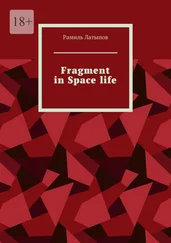Warren Fahy - Fragment
Здесь есть возможность читать онлайн «Warren Fahy - Fragment» — ознакомительный отрывок электронной книги совершенно бесплатно, а после прочтения отрывка купить полную версию. В некоторых случаях можно слушать аудио, скачать через торрент в формате fb2 и присутствует краткое содержание. Жанр: Путешествия и география, на английском языке. Описание произведения, (предисловие) а так же отзывы посетителей доступны на портале библиотеки ЛибКат.
- Название:Fragment
- Автор:
- Жанр:
- Год:неизвестен
- ISBN:нет данных
- Рейтинг книги:5 / 5. Голосов: 1
-
Избранное:Добавить в избранное
- Отзывы:
-
Ваша оценка:
- 100
- 1
- 2
- 3
- 4
- 5
Fragment: краткое содержание, описание и аннотация
Предлагаем к чтению аннотацию, описание, краткое содержание или предисловие (зависит от того, что написал сам автор книги «Fragment»). Если вы не нашли необходимую информацию о книге — напишите в комментариях, мы постараемся отыскать её.
Fragment — читать онлайн ознакомительный отрывок
Ниже представлен текст книги, разбитый по страницам. Система сохранения места последней прочитанной страницы, позволяет с удобством читать онлайн бесплатно книгу «Fragment», без необходимости каждый раз заново искать на чём Вы остановились. Поставьте закладку, и сможете в любой момент перейти на страницу, на которой закончили чтение.
Интервал:
Закладка:
Warren Fahy
Fragment
PROLOGUE
When the American Associationfor the Advancement of Science met in Anaheim, California, in 1999 to discuss an urgent report on the impact of alien species, the scientists gathered weren’t discussing species from another planet-their report referred to species imported to the United States from other parts of this planet.
Cornell University ecologist David Pimentel and graduate students Lori Lach, Doug Morrison, and Rodolfo Zuniga estimated the cost to the United States economy from alien species at approximately $123 billion annually-roughly the gross national product of Thailand.
By 2005, a report called the Millennium Ecosystem Assessment revealed that biological invasions had reached epidemic proportions. At least 170 alien species inhabited the Great Lakes, a single species of American jellyfish had wiped out twenty-six species of commercial fish in the Black Sea, and the Baltic Sea now hosted over a hundred alien invaders.
In 1988, freshwater zebra mussels sucked into ballast compartments of a ship in the Black or Caspian Sea were dumped into Lake Sinclair and eventually spread throughout the Great Lakes and the St. Lawrence Seaway. From there, the mussels spread into the American river systems. A female zebra mussel typically lays 30,000 to 400,000 eggs at a time, and by 1991 the hard-shelled little mollusk had spread as far west as the Mississippi River and driven most native species to the edge of extinction. By consuming algae and oxygen and excreting ammonia, this industrious mollusk threatened the entire eastern river ecology of America as it embarked on its biological joyride. It seemed that nothing could stop the zebra mussel.
By the year 2000, however, a cousin from the Caspian Sea, the quagga mussel, was already catching up to the zebra mussel. In only five years the quagga nearly completely replaced the population of zebra mussels in Lake Michigan, clogging irrigation intakes, infesting turtles and ships, and threatening the whole food chain.
In the early 1990s, the western corn rootworm hitched a ride on a jet and landed in war-torn Yugoslavia. While humans were preoccupied with their brief and bloody war, the rootworm launched its own permanent one. A single pregnant female may have unleashed what is now more than a billion-dollar annual loss of crops in Europe.
Of course, alien invaders have wreaked havoc, and driven the course of evolution, throughout the natural history of life on Earth. Five million years ago a land bridge formed between North and South America: it allowed saber-toothed cats to wipe out the flightless nine-foot-tall terror birds that had ruled South America for 20 million years.
Only 12 thousand years ago, humans followed bison across an icy land bridge from Siberia to North America. There, they found a world ruled by saber-toothed cats. A thousand years later, the cats, woolly mammoths, giant sloths, and an entire ecosystem of interdependent fauna had vanished.
When Columbus and other European explorers arrived in the Americas 10,500 years later, they brought with them diseases like smallpox and gonorrhea that virtually wiped out the native human populations of the so-called New World. In return, Native Americans may have gifted the Old World with syphilis. But the ships of explorers brought more than diseases to their destinations. The European black rat and the Norway brown rat came along as well, and were arguably more successful than humans in their conquest of the Americas.
North American crayfish were imported to Europe in the mid-1800s to replace the native species, which had been wiped out by plague. Unfortunately, the plague-resistant North American species was so successful it carried the plague through all the European river systems where it was introduced, wiping out any original crayfish populations that remained.
In the 1930s, Nazi Reich Marshall Hermann Goering decided that the clever American raccoon was an aesthetically pleasing addition to Germany’s woodland creatures. Now the American raccoon threatens to eradicate the Rhineland’s vineyards and decimates the German wine industry.
Pet owners have introduced their share of unexpected species to their own backyards. Eugene Schiffelin, a Shakespeare enthusiast who thought all birds mentioned by the bard should inhabit the New World, released sixty starlings in Central Park one fine March day in 1890. Because of a single line in Henry IV , there are now 200 million starlings in America, all descended from Schiffelin’s original thirty pairs.
In 2000, an aquarium owner released two adult Chinese northern snakehead fish into a pond in Maryland. Within two years, one hundred of the voracious carnivores-which grow as long as three feet and have nasty teeth with which they devour fish, amphibians, mammals, and even birds-were discovered in the pond. Officials were concerned because the primitive northern snake-head can walk on its fins and survive three days out of water-and the pond was only seventy-five yards from the Patuxent River. Though the pond was pumped full of poison, snakeheads began showing up in the Potomac, and as far south as Florida by 2004.
The industrious honeybee that we see in our flower gardens was intentionally introduced to North America by Spanish conquistadors in the 1500s and remains an indispensable partner to agriculture, having wiped out most of the native species that pollinated native plants. Not satisfied with the honey output of the Italian honeybee, bee geneticist Warwick Kerr brought queens of an African bee species to Brazil in 1956. After producing Africanized honeybees, twenty-six hybrid queens accidentally escaped. Since then, their aggressive Africanized progeny have been expanding their range northward at a rate of 375 miles a year, threatening to eradicate all Italian bee colonies in their path.
In 1986, the Varroa “vampire” mite arrived in North America from Southeast Asia. By 2005, forty to sixty percent of North America’s beehives were wiped out by the vampire mites, and millions of hives had to be rushed from other continents to save the year’s crop.
We are, at all times, in an astonishingly precarious position in relation to the vast web of species around us. All it takes is one new invader-a snake on a piece of driftwood, a seed in a bird dropping, or a pregnant insect in the landing gear of a jet-to throw all the old rules out. The balance that we see around us is a snapshot of a perpetual world war that is, for the most part, acted out too slowly for us to perceive. We prize the fragile ecology of the Hawaiian Islands, and yet 5 million years ago there were no Hawaiian Islands. All of their species evolved from species that were, at one time, invaders that upset the balance enough to entrench themselves and flourish, or perished in the effort.
It is on islands, in particular, that these battles of attrition, which usually take place outside the human timescale, come into sharpest focus. On islands, the battles are swift, and the annihilations total, and dominant species with no competition often proliferate to create multiple new species.
Travelers to tropical islands are familiar with the forms they must sign declaring that they will not transport any species to or from their destinations. In the past, however, humans deliberately brought the plants and animals in their biological entourage with them wherever they went-especially to islands.
When Polynesians colonized the Hawaiian Islands, the chickens they brought with them carried avian pox, which swiftly decimated native bird species. Europeans would later introduce cats, pigs, and tree snakes, with what are now predictable results.
In 1826, the H.M.S. Wellington accidentally introduced mosquitoes to the island of Maui. The mosquitoes carried avian malaria. Entire populations of native birds, which had no immunity to the disease, were wiped out or driven to higher altitudes. Feral pigs exacerbated the problem by rooting around the forest undergrowth and creating breeding pools of standing water for the mosquitoes. As a result, twenty-nine of the island’s sixty-eight native bird species have vanished forever.
Читать дальшеИнтервал:
Закладка:
Похожие книги на «Fragment»
Представляем Вашему вниманию похожие книги на «Fragment» списком для выбора. Мы отобрали схожую по названию и смыслу литературу в надежде предоставить читателям больше вариантов отыскать новые, интересные, ещё непрочитанные произведения.
Обсуждение, отзывы о книге «Fragment» и просто собственные мнения читателей. Оставьте ваши комментарии, напишите, что Вы думаете о произведении, его смысле или главных героях. Укажите что конкретно понравилось, а что нет, и почему Вы так считаете.











